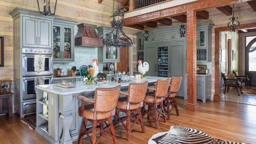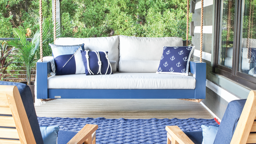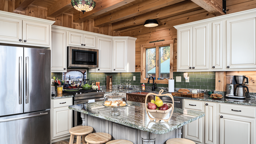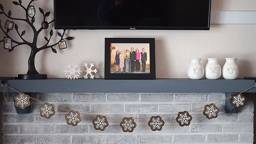
Sometimes, a child’s fairy tale can hold an important lesson for grown-ups, too. Take the story of Goldilocks. In the course of invading the Bear-family homestead, she searched for a comfortable place to sit, a hearty meal and the perfect spot on which to lay her weary head.
But in this quest, she encounters a number of obstacles — a bed that’s too big, porridge that’s too cold and a chair that fell to pieces beneath her tiny frame. After some trial and error, she finally found solutions that suited her needs to a T … until the bears came home.
Drafting your home’s floor plan — or even reviewing existing stock plans — can make you feel a little like our fair-haired heroine. How can you tell if a design will fit your family, especially when it comes to size, when you can’t try it out? Because unlike Goldilocks, a do-over isn’t quite so simple if your strategy doesn’t work out right the first time.
So how do you find a plan with the size and shape that will feel “just right”?
First, consider how many people will occupy the house. If you’re an empty-nester, that number is probably two. If you have a young family, you may have four to six full-time residents. Or, if you’re hoping your log home will be the vacation destination for your friends and family (or you have an exceptionally large brood), you may need a place that can accommodate eight or more.
We’ve asked several log home reps and designers to weigh in with their expert advice about size and amenities so that you, too, can find your happily ever after.
Room for Two
“Our average customer is a couple in their mid-50s looking to build a 1,300-to-1,500-square-foot primary residence and doesn’t have frequent overnight guests. Usually, they’ve done the ‘big house’ thing already and are ready to scale down,” says Greg Altizer, sales manager for Blue Ridge Log Cabins.
Whether it’s your starter home or your forever home, a cozy cabin fits the bill for many log home enthusiasts. Try these tips on for size:
-
Empty nesters tend to gravitate toward a simple floor plan, typically a single story with an open loft that’s less than 1,500 square feet. It gives them all their primary living space on one level (including one to two bedrooms) within a fairly confined footprint. –Corey Hills, Designer, Montana Log Homes
-
Thirty-six-inch doorways leading into bedrooms and bathrooms give a grand, spacious feeling now; and later in life, allow for accessibility and mobility. It’s easier to install them now than retrofit them down the road. –Greg Barnes, Engineering, Blue Ridge Log Cabins
-
Don’t feel restricted by a number — whether its age or square footage. We’re building a home for an elderly couple that’s 2,400 square feet on the main level with a full, finished basement and an indoor pool. Though it’s two levels, there are no stairs in this home; only an elevator connecting the main level with the basement. To comply with fire-safety codes, it has five exterior doors on the main level and the basement is a walkout. –Wesley Lawson, Engineering & Marketing, Blue Ridge Log Cabins
-
Storage is essential but tough to squeeze into a smaller home. When evaluating your plan, look at spaces that are blank and figure out how you can add function to those areas. –Sarah Smith, Marketing Director, Blue Ridge Log Cabins
A Family of Four (or a few more)
Montana Log Homes’ designer Corey Hills gives all his clients this piece of solid advice, but for a full-time family home, it’s even more vital to listen to it: “Take time to analyze how you use your existing residence and then picture your future needs. How does your family function now? How will it change in the next five to 10 years. Identify what’s currently working and what you’d like to alter going forward, then incorporate both scenarios into the new plan.”
Here are a few other considerations to keep in mind to make the most of your floor plan:
-
Everybody has a budget, and whether it’s $100,000 or $600,000 people want to max it out. In the four-to-six-person home, you’re looking at 2,200 to 2,400 square feet with four bedrooms or three plus a loft. We look at utilization of space. Since it’s always less expensive to build up than out, finishing the basement or adding a loft for additional sleeping space is where you get the most bang for your buck. You may even want to incorporate a second kitchen in the basement. –Greg Altizer, Sales Manager, Blue Ridge Log Cabins
-
Create separation between the master bedroom and other bedrooms. It’s important for all the residents to feel they’ve got a place in the home that’s carved out just for them. –Corey Hills
-
In a home of any size, outdoor living space is important. Porches, decks and patios are a log home must. They allow you to expand your living area for a fraction of the cost. Plus, screened-in porches, especially with a fireplace, let you enjoy being outside, as well as your view regardless of weather or time of year. –Wesley Lawson
To Accommodate Eight
Whether you have a big family, are going in on a place with friends or just like large spaces with lots of elbowroom, if you have the budget to buy it, Montana Log Homes’ owner Brad Neu says, “Go for it!”
There are no hard-and-fast rules on how large or small a home should be based on how many people will occupy it. Just make sure the design is logical and flows well. Check out these unique ideas for housing a crowd:
-
In a multifamily situation, you may want to consider giving each family its own “front door” to create a sense of privacy and courtesy for the other inhabitants. In some of our larger projects, we designed entries that go right into each owner’s suite; and from there, they have a door that leads to the shared spaces of the home. In one home, each private area also had its own balcony, with access to a shared porch below. –Greg Altizer
-
If two families decide to pull their resources to buy a vacation home, one route they can go is to design a log duplex. This enables you to keep within a singular footprint that only requires one building permit, but create two very distinct spaces based on each family’s wants and needs. And if the families’ situations change, one side of the duplex could act as a caretaker’s unit or be rented to vacationers without sacrificing privacy or security. –Brad Neu, Owner, Montana Log Homes
-
In a large house, people often entertain a lot. Make sure you have a really good kitchen with extra-large appliances to accommodate feeding a crowd. Design in separate spaces for food prep and serving to keep things organized. Put a microwave in the island, rather than in an upper bank of cabinetry, so it’s more easily accessed by kids or elderly people. You may need a large dedicated dining room, and you want good flow between it all. –Sarah Smith
-
Make sure you plan enough bathrooms. Ideally, in a home for this many occupants, each bedroom should have its own bathroom. If possible, incorporate a full bath on the main level as well as a powder room. If you have a full basement, put a bathroom there, too; or, if it’s not finished, rough-in the plumbing during construction so you have the option for a bathroom down the road. –Corey Hills
See also: Designing the Ultimate Energy-Efficient Floor Plan











